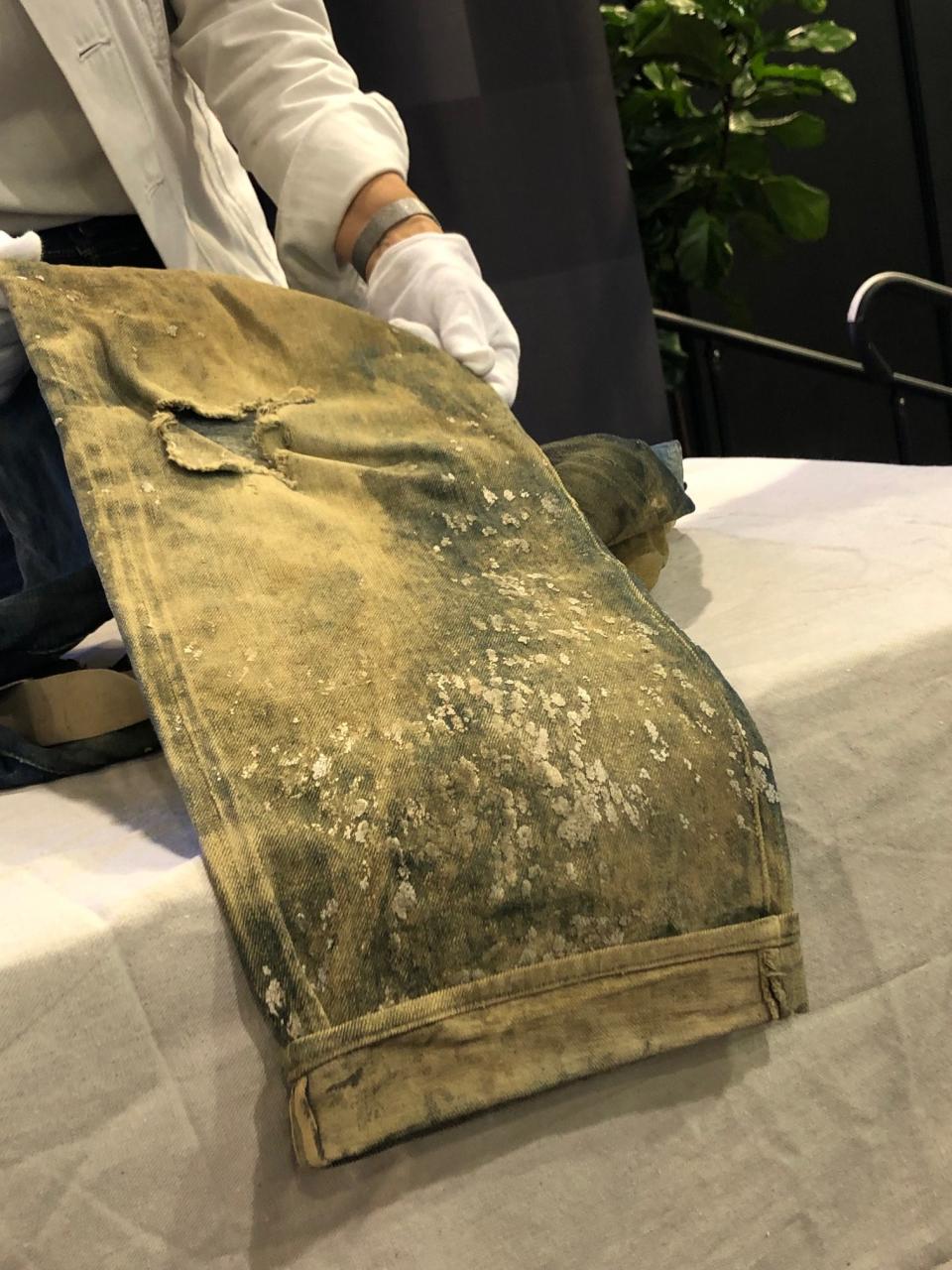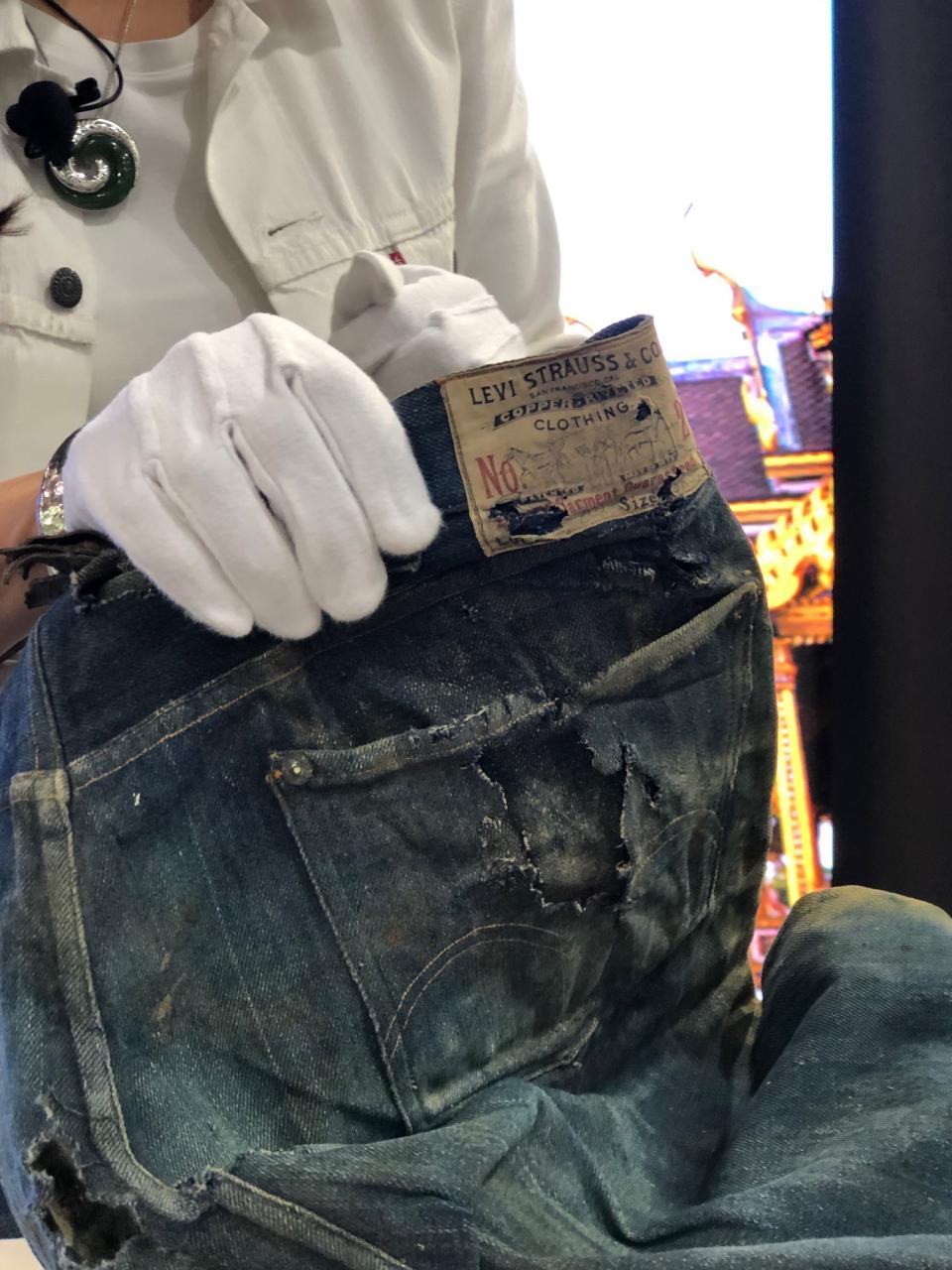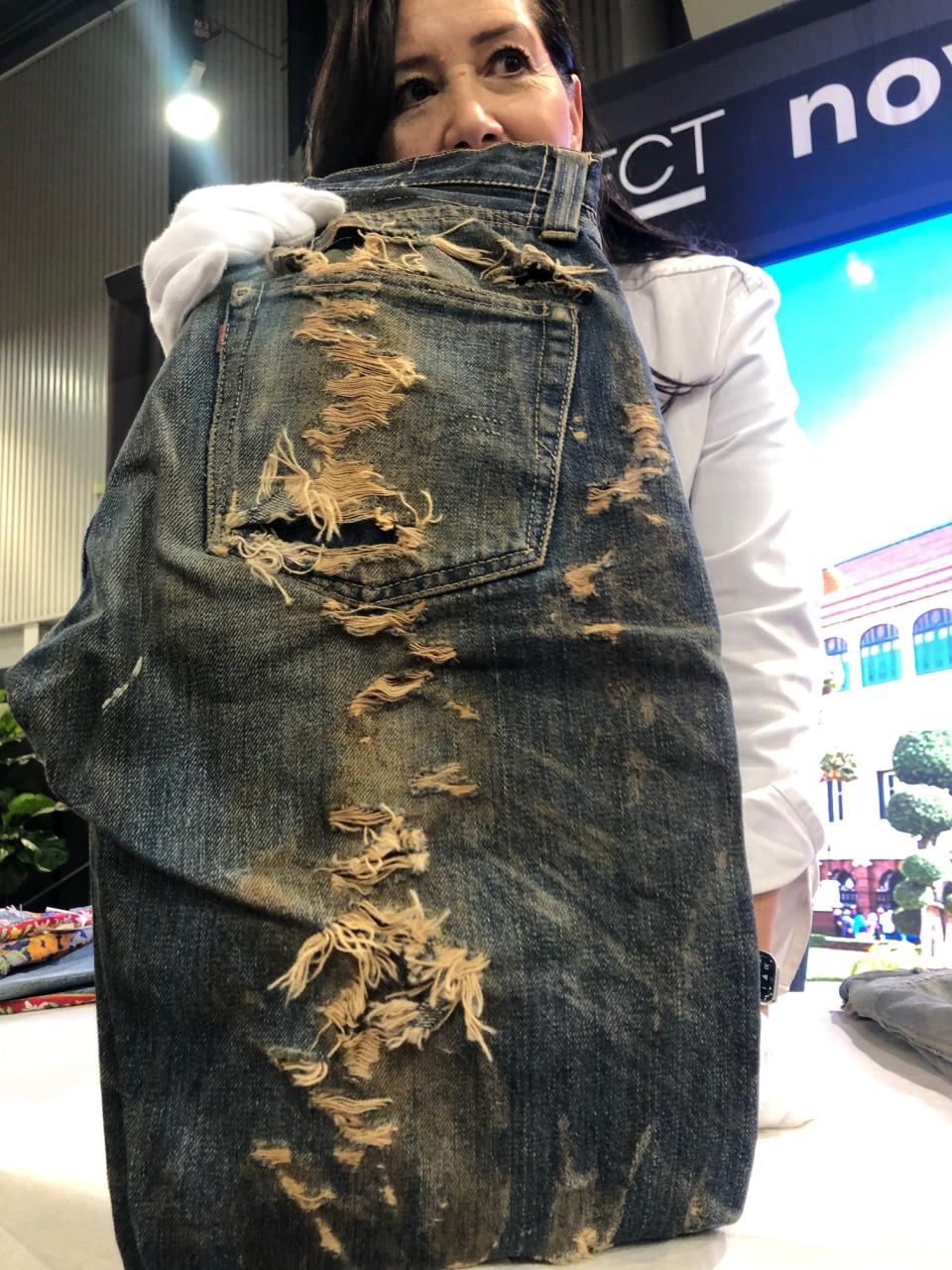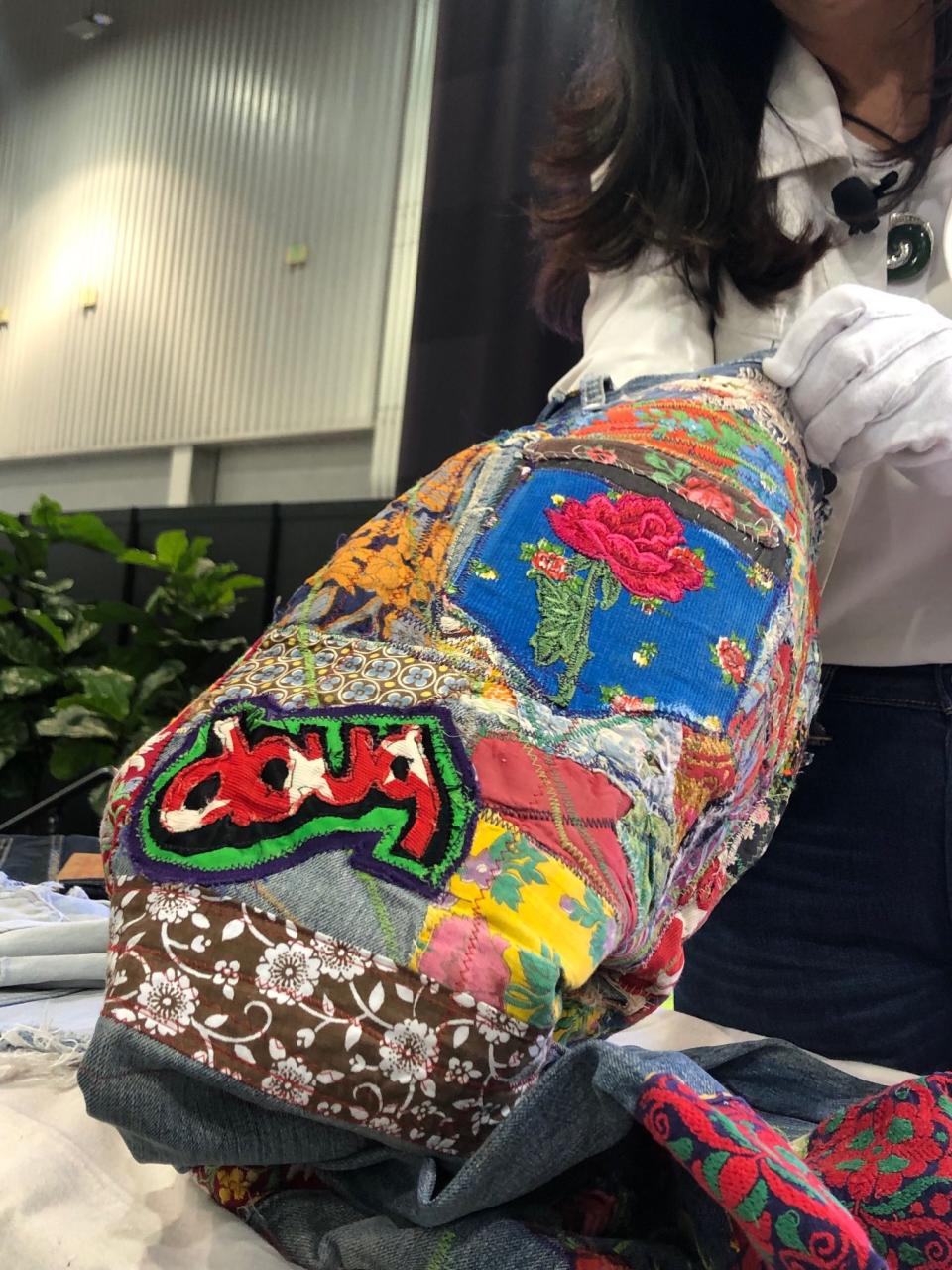Levi’s Historian Brings Archival 501s to Project Las Vegas

Every pair of Levi’s 501 jeans has a story and it’s Tracey Panek’s job to preserve them.
This week at Project Las Vegas, the Levi Strauss & Co. historian presented vintage jeans from the company’s San Francisco archives and the histories unique to each garment. Levi’s designers mine the archives for inspiration, studying and selecting elements that they might use in future products.
More from Sourcing Journal
The 150th anniversary of the 501 this year has given Levi’s and the denim industry at large an opportunity to reflect on the style’s significance in history and pop culture and revisit the original qualities that make the pant a mainstay in fashion.
While the framework for the first riveted denim pants is relatively unchanged, elements of the 501 design and its purpose have evolved. Here, Panek shares how the vintage jeans offer a glimpse into what life was like in bygone eras.
The Calico Jean
The Calico Jean is one of the oldest in Levi’s archive. The button-fly jean dating back to 1900 gets its name from the Nevada mine it was found in.
The first riveted jeans in 1873 were originally created for working men like miners, cowboys, railroad engineers, carpenters “and anyone who needed tough work pants,” Panek said. They wore the original 501 which had a single back pocket—a key indicator of a 19th century 501—with the same arcuate design that Levi’s uses today. Instead of belt loops, the jeans included buttons along the waistband where wearers would hitch their suspenders.

The miners also wore protective helmets with small candles attached to see underground. “Some of our earliest Levi’s have candle wax and that’s from the wax that [dripped] down,” she said. The Calico, she added, has more candle wax than most of Levi’s archival pieces.
Panek noted that the Calico is a 201, a value version of the 501 made with less expensive lightweight fabric and sundries like a cloth back patch.
The Tow 501
The Tow 501 demonstrates “how tough Levi’s products are,” Panek said.
In 1886, Levi’s knew its U.S. patent was about to expire and the company anticipated that everyone would begin to make riveted denim pants. It looked for a way to distinguish its products from others.
Enter the two-horse trademark, an illustration that remains on the 501’s back patch today. The trademark shows a pair of horses moving in opposite directions pulling a Levi’s overall between them.
“The original tagline back in 1886 said ‘It’s no use. They can’t be ripped.’ And the idea was they’re so strong, you can’t pull them apart,” Panek said. Many people have tested the claim and “some have worked, some of them didn’t,” she added.

One notable anecdote involves a pair of 501s that arrived at Levi’s headquarters in 1938. The owner’s car had broken down and to tow it home, he tied the jean and some rope to a friend’s car. The owner sent Levi’s the jeans—with the rope still attached—along with a thank-you letter.
The Chicken Coop 501
The Chicken Coop 501 was found in the attic of an old chicken coop that was being torn down in Arkansas. The owner didn’t know much about the jean, but Panek was able to determine that it came from 1947.
The jean has a Red Tab, which was added to 501s in the 1930s, and a green pocket bag, an item Levi’s used in the 1940s during WWII. “It was only during the ’40s that we didn’t use a white pocket. That’s when we were using whatever fabric we could find because there were a lot of restrictions,” Panek said, adding that the brand would use leftover military fabric.
The 501 underwent other changes during the second World War. “One of the ways that we saved on metal and fabric is we removed the back cinch so there’s no more back buckle. We also took off an extra rivet than it was at the bottom of the button fly,” she said. Levi’s would also stencil rather than stitch the arcuate design on the back pockets.

Panek determined that the Chicken Coop 501 is from just after the war because it has the military fabric but a stitched arcuate.
The jean gives clues about its owner as well. “This was probably a pair of 501s worn by a young boy because they’re pretty small and we know he was right-handed,” she said. The backside of the pant has streaks on the right leg from where the wearer would strike matches.
The Doug Hansen 501
Woodstock was a veritable sea of denim, but what people wore to the iconic moment in music history weren’t just typical jeans. Panek said denim was being transformed with patches and new shapes and became a signature of youth culture. One of the best examples of this from Levi’s archive is the Doug Hansen 501.
Hansen moved to California in 1970, just missing the Summer of Love in 1967. His grandmother had a vintage necktie collection, which he repurposed as patchwork on his jeans. He embroidered his name onto the side of the jeans as well other colorful trims.

“He also did something that became very popular in the late ’60s and ’70s. He took the side hem of the 501, opened it up and added a little bit of extra fabric so he can make bell bottoms and wear them with his boots,” Panek said.
Hansen’s creativity didn’t start and end with jeans. He became a graphic illustrator and a professor at California’s Fresno State University, teaching graphic illustration.

